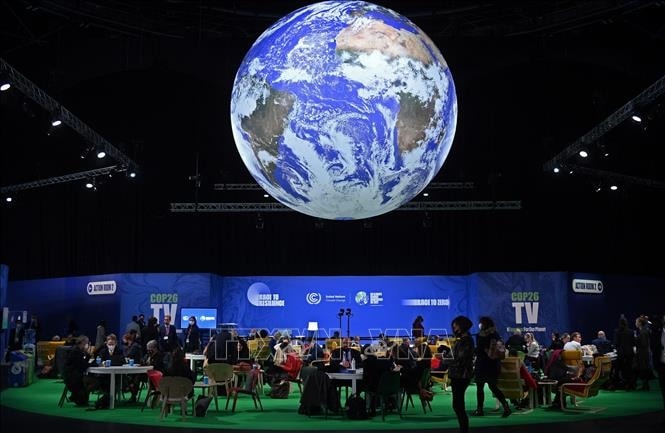Over the past quarter century, many United Nations climate change conferences (COPs) have been held, but with mixed results.

Delegates attend the COP26 Conference in Glasgow, Scotland on November 2, 2021
This year’s COP26 conference in the UK is said to have sparked all of these reactions at once. Experts have said the conference has recorded steady, even historic, progress in efforts to push back the existential threat of global warming.
Dann Mitchell, an expert at the British Meteorological Office, said the conference had achieved more than expected results but also did not really meet expectations. Compared to previous conferences, the fact that for the first time all 196 countries, territories and organizations attending the conference called for a reduction in coal power, or pledged to double financial aid each year - to about $ 40 billion to help poor countries cope with climate impacts, can be considered a big step forward. Similarly, a provision requiring countries to consider setting more ambitious targets to reduce carbon pollution every 1 year instead of every 5 years as before, is also noteworthy.
Alden Meyer, a senior analyst at the climate and environmental think tank E3G, said he was optimistic about the outcome in Glasgow, but said there was still a lot of work to do to make the pledges a reality. A series of events around the world in 2021, including floods, extreme heat and wildfires, combined with forecasts that exceeding the 1.5-degree Celsius (2.7-degree Fahrenheit) limit set in the Paris Agreement would put the planet in danger.
In 2021, the United Nations Intergovernmental Panel on Climate Change (IPCC) released Part 1 of its seven-year climate change outlook, finding that global temperatures are almost certain to exceed 1.5 degrees Celsius within a decade. Meanwhile, sea levels are rising faster than predicted and will continue for centuries. Forests, soils and oceans—which absorb more than half of humanity’s carbon—are already showing signs of saturation. The resulting effects could be massive releases of CO2 from permafrost, and as methane seeps into the Amazon basin and ice melts, submerging cities and deltas that are home to hundreds of millions of people.
Dave Reay, head of the University of Edinburgh's Climate Change Institute, said the world was still on a path to self-destruction and that Glasgow had at least offered humanity an escape route.
Meanwhile, AFP (France) quoted the draft content of part 2 of the IPCC report on climate impacts, expected to be published in February 2022, pointing out that the small steps achieved at COP26 are far from what is needed in the long term. The draft of the report shows that helping vulnerable countries cope with the exponential impact of global warming may require trillions of dollars per year, not the tens of billions proposed at COP26. The failure of rich countries to provide 100 billion USD per year in aid to developing countries by 2020 makes the prospect of the expected trillions of dollars even more distant.
Experts also agree that the future of the fight against climate change may depend on the world’s four largest emitters, which collectively account for 60% of global carbon emissions: the United States, the European Union (EU), China and India. A single industry or country cannot change global warming; collective action is needed, involving all sectors and all countries.
According to VNA